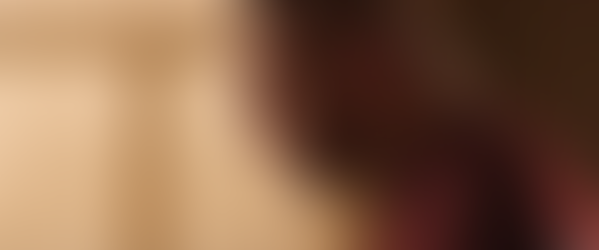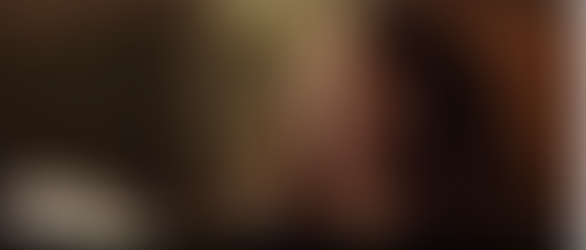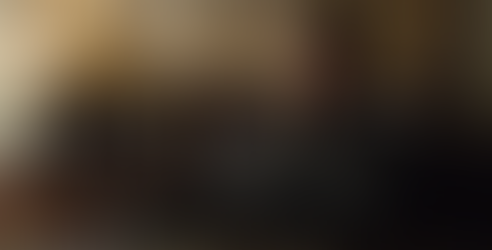Meeting the standard
- Mike Kozlenko
- Jul 5, 2019
- 7 min read
Updated: Mar 23, 2022
You need to know how to shoot a good image before you can even get close to a great one

*Wrote this on a flight like a month ago. Just getting around to posting
I’m writing this as I sit in an airplane, drunk and enjoying my lucky free first-class upgrade, sitting in a seat that’s actually the size for a human being. These opportunities are super rare, so I try to milk them for all they’re worth. By drinking as many screwdrivers as I can during this 1 hour flight….I’m a little sleep deprived, having just finished a cool cooking-spot and having to hop on a plane not long after. So for some reason it all got me randomly thinking about some cinematographer round-table discussions I watched on YouTube the other day.
They featured Roger Deakins, Hoyt Van Hoytema, Rachel Morrison, Matthew Libatique, Linus Sandgren, & a couple others. I’m listening to them talk about what their visual approach is for their respective Oscar-nominated film that year. They go back & forth about a bunch of awesome higher-level creative jibber-jabber; talking about color palettes & how the lensing & lighting reflects the characters’ state of mind in each scene. That stuff is freaking awesome to hear them talk about.
However, while I’m glad the way your dog was barking one morning inspired you to shoot everything with intense blue top-light... how the heck did you ACTUALLY light all those beautiful wide shots? What lamps & diffusions & flags & camera settings did you use? What gels do you have on the lights? What lenses did you use? What stop did you shoot at?
Why aren't they constantly spewing out the info we REALLY want to know?
The thing is, those DP's are on a different planet. All the technical knowledge is so ingrained in their noggins that they don’t have to think about it too hard. That's why they don't talk about it often. It’s all second nature to them (not to mention they have great gaffers). It’s like asking Charles Dickens/Shakespeare their approach to reciting the alphabet. These DP's instinctively know how to light a good-looking daylight interior. They know how to meet the “standards.” There are certain lighting principles & tricks & patterns in many different scenes & locations that are more-or-less universally accepted as a base-level method for getting a good looking image.
For instance, let’s talk about a run-of-the-mill daylight interior in a living room. Generally speaking, you want to have the scene blocked out with talent to take advantage of window light. You may or may not need to shine a light through the window into the living room to get more level. And you may want to flag areas of light to control the spill so the light doesn’t flatten out a back wall or overexpose a shiny object, etc. Then you may or may not want to wrap the light around a face so it’s not so side-y, so you stretch out the window light with a soft source like a kino from inside. And/Or you diffuse the light that you’re shining through the window. Maybe a bit of neg fill to cut out some return bounce. Boom. You have a basic-looking daylight interior. Sometimes that’s all you need.
This is a gross oversimplification of something that CAN be very complex and obviously there’s a million different scenarios where this isn’t the answer, but once you understand how to practically achieve something that doesn’t look like ass, that’s where you can start having a little fun with it. Maybe we need the light to look like soft & natural dusk light. So you mess with diffusions & gels to cool the light. Or maybe it needs to have a piercing early-morning golden beam of light coming in. Or we cheat in some warm light from the fill side because of light spill from the nearby kitchen. You can start thinking about what would work best for the scene & the space. Maybe the main key light is high & angled down and it makes sense to use a skip-bounce from below camera to illuminate the talent instead of a regular keylight from 45 degrees up, shooting down. THEN you can get creative with lensing & camera movement, and focus, etc. And then more technical considerations come back into play, albeit things that are a bit more advanced. If you’re using an HMI, is it an older bulb that has a different color temperature than the ambient daylight or the other HMI that you’re using elsewhere on the set? Maybe you need to gel it to get rid of a weird tint it has. There’s a bunch of stuff like this that comes up.
Matthew Libatique never talks about the nitty gritty details of that because it’s ingrained so heavily into his noggin. He’s shot so many things so he knows where any problem points will be & he knows how to fix things to meet the standard of a Hollywood film. That’s so easy for folks like him. After acquiring the base knowledge a cinematographer needs in most situations, that is where the real artistry comes in. That’s why in many hollywood films, you rarely see an image that actually looks UNINTENTIONALLY BAD. You may have disagreements about the subjective creative choices of how a scene looks or feels, but regardless, 99% of films in theaters meet the “standard” of what a movie should look like. This means that an average viewer, like your normal accountant friend Tom, doesn’t look at an image and say “why is the sun in 2 different places”? Whether it’s Dunkirk or some goofy movie with Dwayne “the rock” Johnson, most images will, at minimum, be properly exposed with decent contrast through the frame. Nothing is going to look like a student film, unless it is suppose to. But a movie that Hoyt Van Hoytema shoots is always going to look nicer than most because of the small nuance that he peppers into his images, and that's what sets him apart. Every hollywood DP knows how to light a nicely balanced daylight interior. But someone like a Hoytema or Deakins is playing a whole other ball game; things like choosing the right lenses & filtration for the story, beautifully structured & composed frames, infusing rich tones into the shadows of an image, bla bla bla. Sometimes it means making the light look ugly and harsh and green to fit the scene. HBO’s Chernobyl does a lot of this. Don't get me wrong, the directors need to be steering the ship & providing a great vision. And art department needs to help with all this shit too. But the elite cinematographers are masters of finding tons different things that make an image look 1% better. Then when you add them up, the image looks a whopping 30% better than the standard daylight-interior.
I want to make a note of what I think is average, respectable Hollywood cinematography. Not anything to write home about, but also not inherently bad. I saw the trailer for this Dave Bautista film called My Spy as an ad on a youtube video. I would never have interest in watching this, but it's still a studio movie with a decently big budget. Take a look at the 2-shot up top. There is level coming thru the window, a pretty unrealistic hard edge light on camera right, and a slightly softer source coming from camera left as a backlight for the girl. You can see on the closeup of the guy just how unnatural that backlight on his red shirt is. This type of stuff may irk a DP but your accountant friend Tom likely won't pause and be like "wait why the heck is that edge light there?" The DP that shot this is obviously very skilled. He has all the technical knowledge & communication skills to craft imagery that is acceptable for a $80-100 million Hollywood film. That is a very hard thing to get good at. My main argument is that he likely has a SIMILAR base-level of knowledge as our favorites: Chivo, Libatique, Deakins, Cronenweth. But those guys are just better overall artists, more tuned in to the essence of characters, more nuanced with color & directionality of light & lensing & bla bla bla.
Lets compare the images from above to something shot by the great Deakins. This film, Hail Caesar, is your typical Coen Brothers odd comedic drama. I MAY be sort of comparing apples to oranges here, but if the film above is from a light-hearted drama, I want to compare to another somewhat light-hearted drama, but illustrate a simple principle at play here that makes these images look better to my eye.
Here, we have the light clearly coming in from one side of the room. While the light shining thru the door on camera-right of the first frame is likely a separate source from the one giving him the hard hair light, it is at least on the SAME SIDE. We don't have 3 suns here. It's just 1. On the reverse, in frame 2, the light creating the shadows on the wall is likely a different source than the one lighting up the back of George Clooney's head near to camera (unless its one lamp that is beautifully flagged off). But it all LOOKS like it's coming from the same source because its coming from the same direction and feels motivated. This feels very realistic and keeps me focused on the scene.
Anyways, back to me...I’m at a point in my career where I don’t know shit. I still need to acquire the technical knowledge to be able to at minimum meet the “standard” of a professional, cinematic image. I need to get up to snuff on using toplight effectively, or getting super soft key lights that don’t spill all over the place in small-location nighttime interiors. Or lighting a medium to large space. Or getting a deeper understanding on using composition to reveal information about a character. The list is very long. And the route I’m taking to get there is deconstruction & reconstruction. Looking at images that I like, from tons of narrative & commercial cinematographers, identifying what I like about the images, and pretty much trying to replicate them. It’s not copying, it’s a process of actively acquiring the tools & understanding the principles that DP’s I admire like to use. And being able to toss them into a big bag of knowledge that I can pull from when needed. So at a minimum, when the 1st AD says I have like 12 seconds to finish lighting the shot, I can meet the standard. And at maximum, I can quickly light a scene to look decent, and then use the rest of my brainpower to figure out all the small incremental changes I can make to imprint my voice onto the imagery, convey the emotion of a scene better, & push the boundaries of this art form.
I'll end with a few images from some recent projects that I'm excited to dive into & write about what the hell I actually did & why I did it:


























